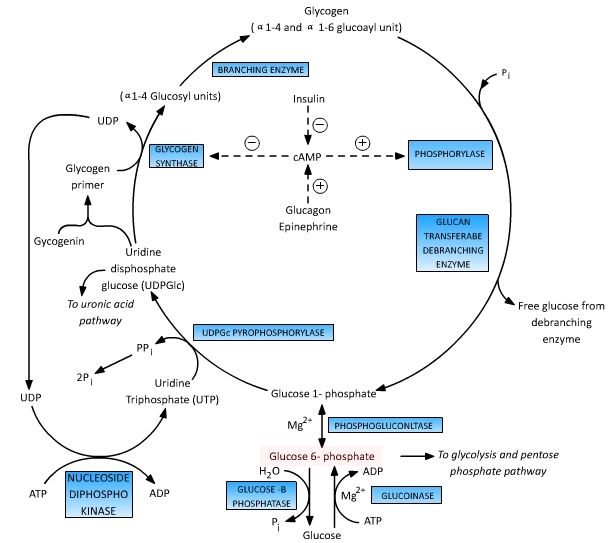what is glucose 6 phosphate Glucose 6 phosphate : central to glucose metabolism
Let’s talk about glucose. We all know that glucose is an essential source of fuel for our bodies, but have you ever stopped to think about how glucose gets converted into energy? Today, we’re going to dive into the complex process of glucose metabolism and explore the role of an important molecule called glucose-6-phosphate. Glucose, in its simplest form, is a six-carbon molecule that is found in many different foods, including bread, pasta, and fruits. When we consume these foods, our bodies break down the glucose molecules and use them to produce ATP, the energy source that powers our cells. But in order to produce this ATP, glucose must first be converted into its more usable form: glucose-6-phosphate. The process of converting glucose into glucose-6-phosphate is known as glycolysis. This process is crucial for energy production, and it takes place in every cell of our bodies. The first step in glycolysis is the addition of a phosphate group to glucose, which is catalyzed by an enzyme called hexokinase. This reaction produces glucose-6-phosphate, which is more reactive than glucose and can be used to produce ATP. So why is glucose-6-phosphate so important? For one thing, it acts as a key regulatory molecule in the glycolysis pathway. If there is a surplus of glucose-6-phosphate in the cell, it can signal to the enzymes involved in glycolysis to slow down or stop the process. This helps to prevent excess ATP production, which can be harmful to the cell. In addition to its role in energy production, glucose-6-phosphate is also a precursor to other important molecules in the body, including glycogen and nucleotides. Glycogen is a polysaccharide that is stored in the liver and muscles and can be broken down to release glucose when the body needs it. Nucleotides, on the other hand, are the building blocks of DNA and RNA, the genetic materials that encode our genetic information. Overall, glucose-6-phosphate is a critical molecule in our bodies that plays a key role in energy production and cellular regulation. Understanding the complex process of glucose metabolism can help us to appreciate the amazing biochemistry that occurs within our cells every day. So the next time you enjoy a sweet treat, remember that your body is hard at work converting that glucose into ATP to power your cells, thanks in part to the important molecule glucose-6-phosphate.
If you are looking for Glucose-6-phosphate - encyclopedia article - Citizendium you’ve visit to the right web. We have 5 Images about Glucose-6-phosphate - encyclopedia article - Citizendium like Glucose-to-Glucose-6-Phosphate - PhD Muscle, Glucose 6 Phosphate : Central to Glucose Metabolism | Epomedicine and also Glucose-to-Glucose-6-Phosphate - PhD Muscle. Read more:
Glucose-6-phosphate - Encyclopedia Article - Citizendium
 en.citizendium.orgglucose phosphate citizendium
en.citizendium.orgglucose phosphate citizendium
Glucose-to-Glucose-6-Phosphate - PhD Muscle
 phdmuscle.comglucose phosphate interactions muscle
phdmuscle.comglucose phosphate interactions muscle
Glucose 6 Phosphate : Central To Glucose Metabolism | Epomedicine
 epomedicine.comglucose phosphate metabolism glycogen enzyme glycolysis fate phosphorylase central epomedicine into formation converts
epomedicine.comglucose phosphate metabolism glycogen enzyme glycolysis fate phosphorylase central epomedicine into formation converts
File:Glucose-6-phosphate-skeletal.png
 commons.wikimedia.orgglucose phosphate isomerase skeletal file price enzyme immobilized gluconeogenesis pharmaceutical grade wikidoc commons size larger
commons.wikimedia.orgglucose phosphate isomerase skeletal file price enzyme immobilized gluconeogenesis pharmaceutical grade wikidoc commons size larger
GLUCOSE-6-PHOSPHATE DEHYDROGENASE From Leuconostoc Mesenteroides
 www.toyobousa.comglucose phosphate dehydrogenase leuconostoc formula chemical mesenteroides gif preparation specification
www.toyobousa.comglucose phosphate dehydrogenase leuconostoc formula chemical mesenteroides gif preparation specification
Glucose phosphate citizendium. Glucose-6-phosphate dehydrogenase from leuconostoc mesenteroides. Glucose phosphate isomerase skeletal file price enzyme immobilized gluconeogenesis pharmaceutical grade wikidoc commons size larger